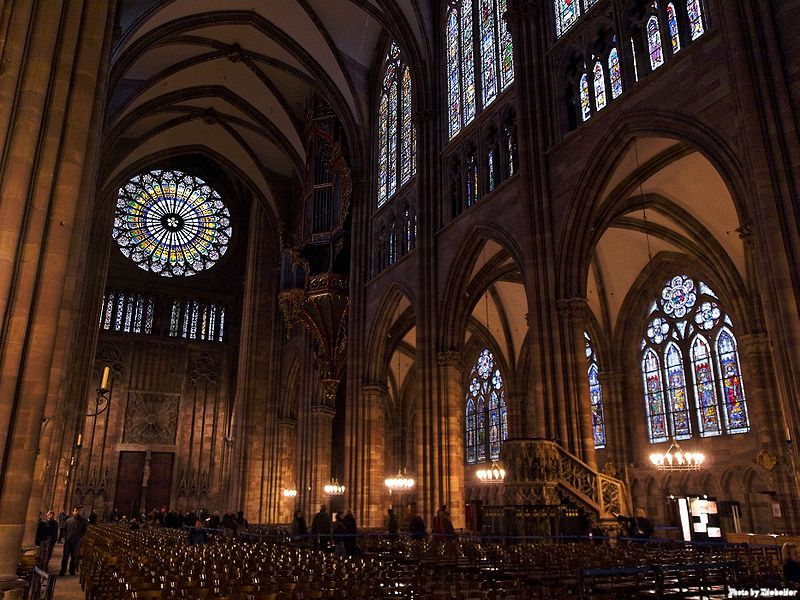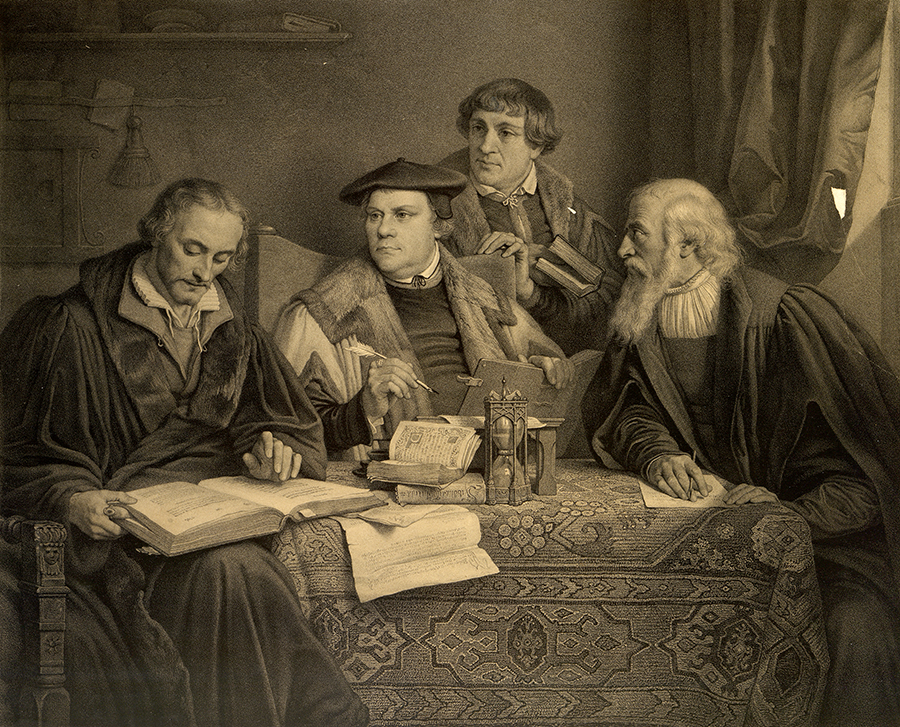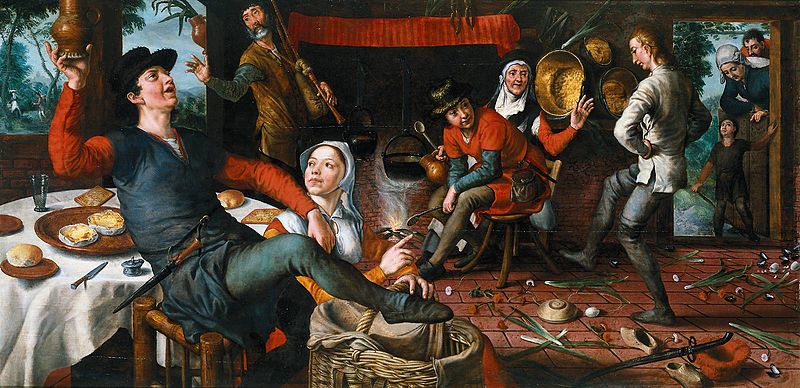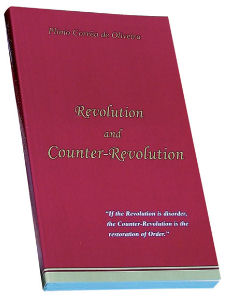In the fourteenth century, a transformation of mentality began to take place in Christian Europe; in the course of the fifteenth century, it became ever more apparent. The thirst for earthly pleasures became a burning desire. Diversions became more and more frequent and sumptuous, increasingly engrossing men. In dress, manners, language, literature, and art, the growing yearning for a life filled with delights of fancy and the senses produced progressive manifestations of sensuality and softness.

Taken from Manners, Customs, and Dress During the Middle Ages, and During the Renaissance Period By P. L. Jacob, page 66.
Little by little, the seriousness and austerity of former times lost their value. The whole trend was toward gaiety, affability, and festiveness. Hearts began to shy away from the love of sacrifice, from true devotion to the Cross, and from the aspiration to sanctity and eternal life. Chivalry, formerly one of the highest expressions of Christian austerity, became amorous and sentimental. The literature of love invaded all countries. Excesses of luxury and the consequent eagerness for gain spread throughout all social classes.
Penetrating intellectual circles, this moral climate produced clear manifestations of pride, such as a taste for ostentatious and vain disputes, for inconsistent tricks of argument, and for fatuous exhibitions of learning. It praised old philosophical tendencies over which Scholasticism had triumphed. As the former zeal for the integrity of the Faith waned, these tendencies reappeared in new guises. The absolutism of legists, who adorned themselves with a conceited knowledge of Roman law, was favorably received by ambitious princes. And, all the while, in great and small alike, there was a fading of the will of yore to keep the royal power within its proper bounds as in the days of Saint Louis of France and Saint Ferdinand of Castile.

And, all the while, in great and small alike, there was a fading of the will of yore to keep the royal power within its proper bounds as in the days of Saint Louis of France and Saint Ferdinand of Castile.
The cathedral of Our Lady of Strasbourg was built from 1176 to 1439
B. The Pseudo-Reformation and the Renaissance
This new state of soul contained a powerful although more or less unacknowledged desire for an order of things fundamentally different from that which had reached its heights in the twelfth and thirteenth centuries.
An exaggerated and often delirious admiration for antiquity served as a means for the expression of this desire. In order to avoid direct confrontations with the old medieval tradition, humanism and the Renaissance frequently sought to relegate the Church, the supernatural, and the moral values of religion to a secondary plane. At the same time, the human type inspired by the pagan moralists was introduced by these movements as an ideal in Europe. This human type and the culture and civilization consistent with it were truly the precursors of the greedy, sensual, secularist, and pragmatic man of our days and of the materialistic culture and civilization into which we are sinking deeper and deeper. Efforts to effect a Christian Renaissance did not manage to crush in the germinal stage the factors that led to the gradual triumph of neopaganism.

Philipp Melanchthon (left), Martin Luther (center), Johann Bugenhagen (aka Pomeranus, second from right), and Caspar Cruciger (right) translate the Bible. Lithograph by Alphonse Léon Noël from a painting by Pierre-Antoine Labouchère, ca. 1846.
In some parts of Europe, this neopaganism developed without leading to formal apostasy. It found significant resistance. Even when it became established within souls, it did not dare ask them – at least in the beginning – to formally break with the Faith.
However, in other countries, it openly attacked the Church. Pride and sensuality, whose satisfaction is the pleasure of pagan life, gave rise to Protestantism.
Pride begot the spirit of doubt, free examination, and naturalistic interpretation of Scripture. It produced insurrection against ecclesiastical authority, expressed in all sects by the denial of the monarchical character of the Universal Church, that is to say, by a revolt against the Papacy. Some of the more radical sects also denied what could be called the higher aristocracy of the Church, namely, the bishops, her princes. Others even denied the hierarchical character of the priesthood itself by reducing it to a mere delegation of the people, lauded as the only true holder of priestly power.
On the moral plane, the triumph of sensuality in Protestantism was affirmed by the suppression of ecclesiastical celibacy and by the introduction of divorce.”
Plinio Corrêa de Oliveira, Revolution and Counter-Revolution (York, Penn.: The American Society for the Defense of Tradition, Family, and Property, 1993), Part I, Ch. 3-A, pp. 14-15.










